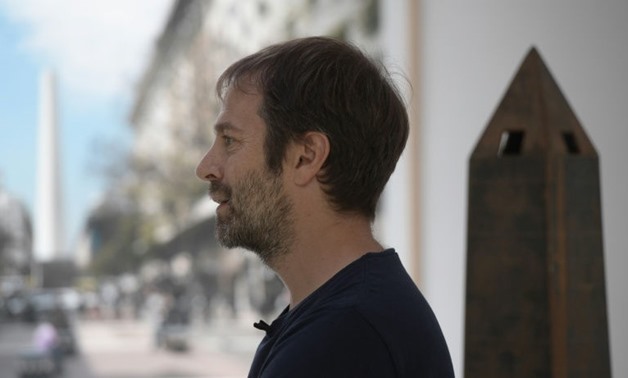
Argentine conceptual artist Leandro Erlich has seen his works on display in Latin America, Europe, Asia and the United States
Thousands of visitors have posed on his trompe-l'oeil facades, he made the pointed tip of the Buenos Aires Obelisk disappear and he even tricked visitors into thinking they were seeing others underwater in a giant pool.
Argentina's Leandro Erlich is shaking up the art world with his wonderful world of illusions.
The 44-year-old conceptual artist divides his time between his hometown Buenos Aires and Montevideo, the very livable capital of neighboring Uruguay.
In his dream factory -- a three-story studio in the Villa Crespo residential area of Buenos Aires shielded from the road by a giant metal barrier -- Erlich creates his giant installations, which have earned cult status in London, Paris and New York.
- The secret to his success -
Erlich has managed to wow both art amateurs and discerning critics with his work. The biggest display of his work to date -- 44 pieces in total -- has drawn 400,000 visitors to the Mori Art Museum in Tokyo, where it will run until April 1.
"Erlich stimulates the senses, not just the intellect. He's asking patrons to live through an experience, as one does at the theater," explains Andres Duprat, director of the National Museum of Fine Arts in Buenos Aires.
"Not only are his works making waves in the art world, they are reaching a much wider public," Duprat says.
"This is not someone who is doing special effects. He's showing how it all works. Once the visitor understands the work, he or she can begin to savor it, and reflect on it."
In "Port of Reflections," colorful rowboats seem to float -- except there is no water.
"Swimming Pool" sees people walk fully clothed into a pool -- except there is no pool.
"Elevator Maze," a matrix of elevator banks, confuses patrons when they don't see their own reflection in the mirror.
Visitors are thrilled, confused, annoyed or experience an emotion somewhere in between -- but they are never indifferent.
"When a work is well received, it brings great satisfaction. It opens up opportunities for the future. In concrete terms, my projects are difficult to do," Erlich told AFP in an interview.
"There is no single format," he added. "I've done video, sculpture, photography and of course installations. The idea of conceptual art is now broad enough to include all forms of expression."
- Not a solitary artist -
Erlich's works play with optical illusions and our perception of sound. At his studio in Buenos Aires, he works with craftsmen and designers to bring his vision to life.
Erlich said his team "came together over time and depending on need."
"I have lived for a long time away from Buenos Aires -- five years in the United States, five years in France, before returning to South America."
In the Uruguayan capital, he finds inspiration and time to think.
"I have trouble working in places where there is too much stimulation, too much noise," Erlich says.
"With globalization, the world is smaller now. My universe is indisputably very 'Rioplatense'," he says -- an adjective describing the Rio de la Plata estuary separating Argentina and Uruguay.
In Buenos Aires, many remember when he made the tip of the obelisk vanish in 2015.
He covered the point with a sort of square cap, giving the impression it was cut off. In tandem, a replica of the tip was built and placed in a museum.
"The idea was for people to take back the monument," which cannot be entered, he said.
The artist's work has been displayed in cities around the world -- New York, Paris, London, Barcelona, Madrid, Rome, Venice, Taipei, Seoul, Tokyo and Sao Paulo, to name a few.
In "Building," visitors from a dozen countries placed themselves on a building facade installed on the ground, but reflected in a mirror to the side.
"All of my work has an aspect of public participation," Erlich says.
"The starting point is my passion for challenges, and being able to express my ideas."


Comments
Leave a Comment